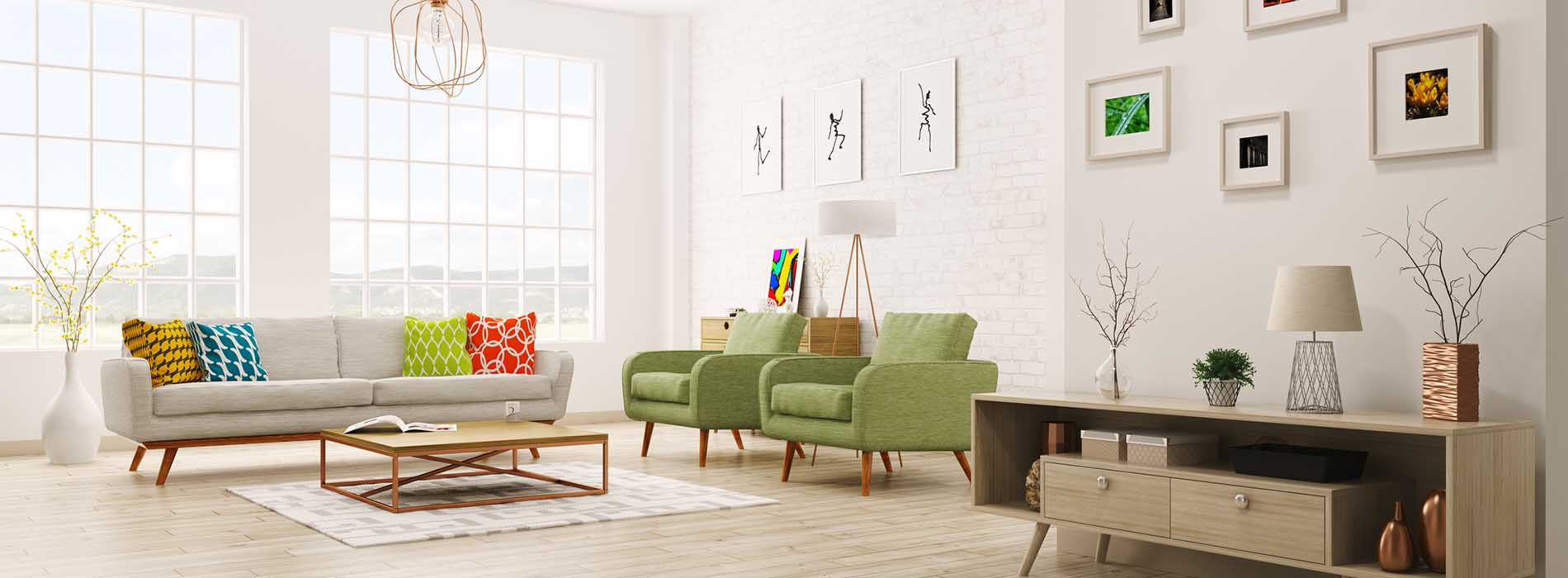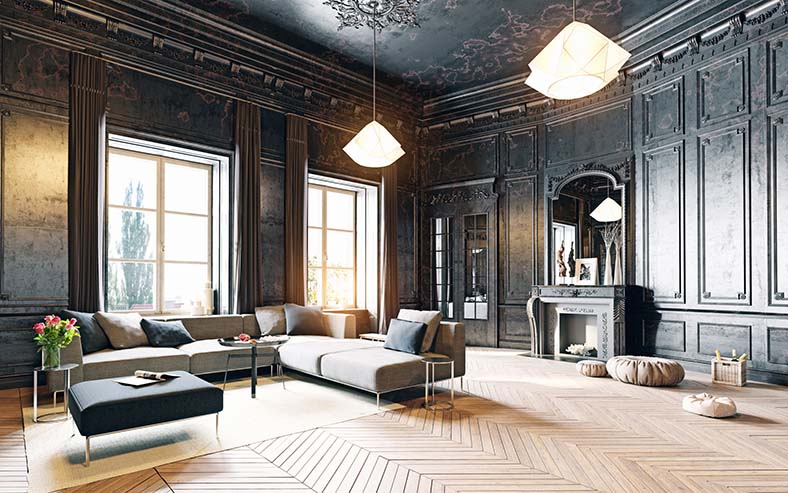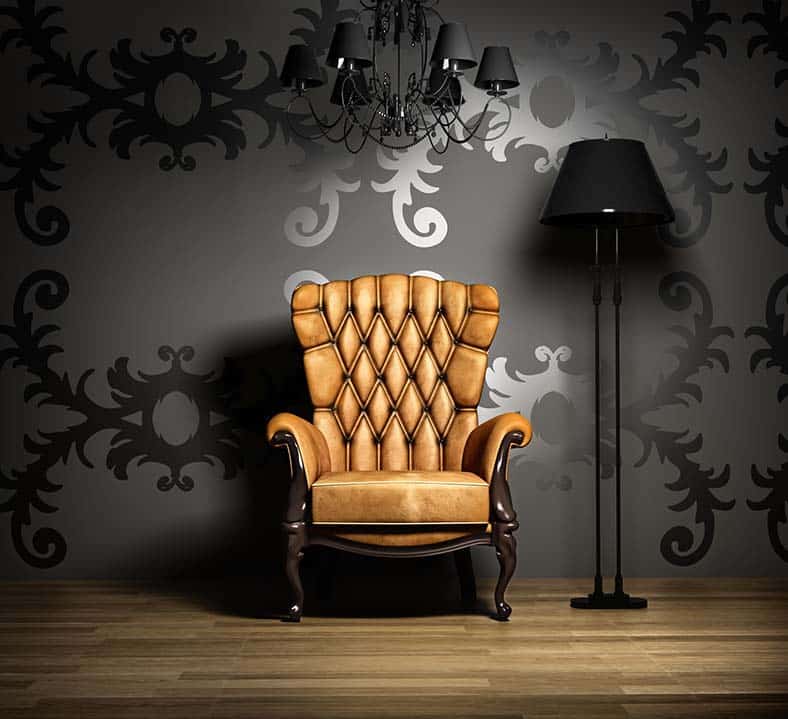Say the phrase “18th-century Queen Anne rambler,” and the first words that pop into your head probably aren’t “industrial light fixtures” or “matte appliances.” But if you want to keep up with the Joneses—and with the interior design magazines—you need to have room to incorporate modern details that are both stylish and appropriate for your property.
Living in a historic home doesn’t mean you have to restrict yourself to antique furniture and silk damask, though. Just a little bit of decor know-how is enough to take you from strictly traditional to smart and sophisticated. It’s all about learning how to blend styles in a way that’s casual and not forced—a balance we’re always helping homeowners achieve here at Modernize. That may sound like a tall order, but by following the tips below, you’ll be able to mix seemingly disparate decor elements like a pro, adding a fresh new feel to your historical home.
Use color to tie different styles together
A unique accent color serves as a design through line, seamlessly merging pieces from two or more different eras. For instance, a classic palette like black and white works wonders, lending a fresh, graphic feel to well-covered patterns like toiles and tree of life. Or use a vibrant, bold hue, such as a vivid green or turquoise, to add a small punch of modern sensibility to a older interiors. Choose sofa pillows or a floor rug that highlights this color for maximum effect.
Find commonality between dissonant pieces
Just because two pieces hail from different design periods, doesn’t mean they don’t have anything in common. For instance, a minimalist modern coffee table makes an excellent mate for a midcentury-style sofa and an industrial chandelier pairs perfectly with a quaint, farmhouse kitchen table. Pay special attention to the lines: are they boxy and square, decorated and embellished, sleek and narrow, plush and soft? Use corresponding shapes to create unity throughout a room, allowing you to pair dissonant decor.

Modern-style black living room apartment. (3D Rendering)
Give the eye somewhere to rest
Remember: Artwork, vases and other accents are your friends
Abstract art pieces are a perfect way to blend contemporary elements into a period-heavy space. Paintings and sculptures are especially effective at this, since artists often mimic classic styles in order to invert the works from previous eras. Look for abstract expressionist prints that recall classic portraits and landscapes and use them as a foil for high-backed sofas, rolltop desks and other antique forms. Or add small bursts of intense color by incorporating vases, pottery, candle holders and table lamps. The right pieces will make your antique interiors sing.

3D interior scene with classic armchair and lamp.
Give traditional furniture a modern makeover
Traditional doesn’t have to mean fussy. Add a modern flair to historical pieces by repainting them in vivid colors, like an inviting turquoise or an upscale saffron. Or use a slipcover to incorporate a more contemporary pattern to upholstered furniture. Play with adding contextually modern prints, like chevrons, tribal patterns, or bohemian florals. Replacing drawer pulls and knobs with angular brushed nickel or chrome hardware is another small touch that will do wonders for simple vintage pieces. Or give glossy lacquers a modern shabby-chic finish by repainting with milk or chalk paint. There are literally hundreds of ways to DIY yourself into a more updated design scheme!
Choose trends that work with conventional styles
Many trends are simply a redux of previous styles, which can work in your favor when you’re decorating a traditional home. For example, shiplap, the overlapping boards so popular right now in Brooklyn bistros, are nothing but a new take on farmhouse couture. Marble, which is currently having a moment, dates as far back as ancient Greece—not exactly what you’d call new. Items usually become trendy again because they’re being used in a new, interesting way. For instance, marble suddenly became popular after it showed up printed on unexpected surfaces, like pillows, wall clocks and lampshades. Jumping on a trend like this lets you get the best of both worlds: incorporating a classic element while using it in a fresh new approach. See? You don’t have to give up on fashionable decor after all!
 Erin Vaughan is a blogger, gardener and aspiring homeowner. She currently resides in Austin, Texas, where she writes full time for Modernize, with the goal of empowering homeowners with the expert guidance and educational tools they need to take on big home projects with confidence.
Erin Vaughan is a blogger, gardener and aspiring homeowner. She currently resides in Austin, Texas, where she writes full time for Modernize, with the goal of empowering homeowners with the expert guidance and educational tools they need to take on big home projects with confidence.


